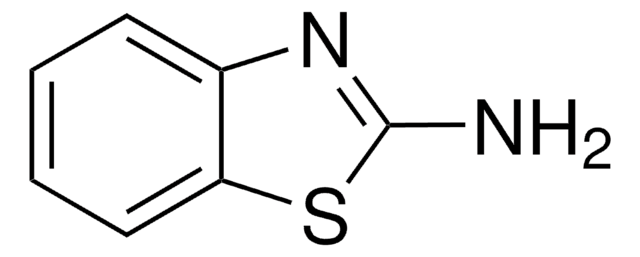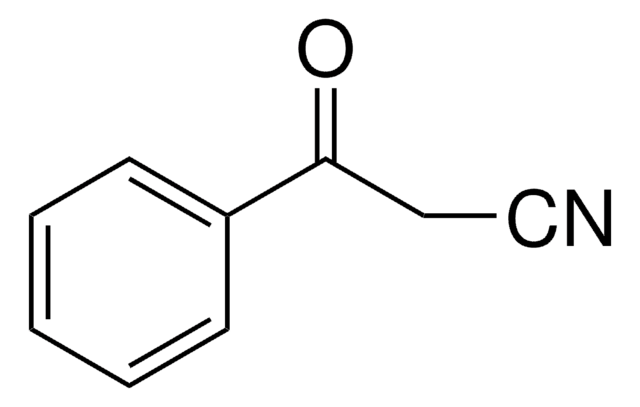171573
3-Phenylpropionitril
99%
Synonym(e):
Hydrozimtsäurenitril
About This Item
Empfohlene Produkte
Qualitätsniveau
Assay
99%
Form
liquid
Brechungsindex
n20/D 1.521 (lit.)
bp
113 °C/9 mmHg (lit.)
mp (Schmelzpunkt)
−2-−1 °C (lit.)
Dichte
1.001 g/mL at 25 °C (lit.)
Funktionelle Gruppe
nitrile
phenyl
SMILES String
N#CCCc1ccccc1
InChI
1S/C9H9N/c10-8-4-7-9-5-2-1-3-6-9/h1-3,5-6H,4,7H2
InChIKey
ACRWYXSKEHUQDB-UHFFFAOYSA-N
Suchen Sie nach ähnlichen Produkten? Aufrufen Leitfaden zum Produktvergleich
Allgemeine Beschreibung
Anwendung
Signalwort
Danger
H-Sätze
Gefahreneinstufungen
Acute Tox. 3 Oral
Lagerklassenschlüssel
6.1C - Combustible acute toxic Cat.3 / toxic compounds or compounds which causing chronic effects
WGK
WGK 3
Flammpunkt (°F)
230.0 °F - closed cup
Flammpunkt (°C)
110 °C - closed cup
Persönliche Schutzausrüstung
Eyeshields, Faceshields, Gloves, type ABEK (EN14387) respirator filter
Hier finden Sie alle aktuellen Versionen:
Besitzen Sie dieses Produkt bereits?
In der Dokumentenbibliothek finden Sie die Dokumentation zu den Produkten, die Sie kürzlich erworben haben.
Kunden haben sich ebenfalls angesehen
Unser Team von Wissenschaftlern verfügt über Erfahrung in allen Forschungsbereichen einschließlich Life Science, Materialwissenschaften, chemischer Synthese, Chromatographie, Analytik und vielen mehr..
Setzen Sie sich mit dem technischen Dienst in Verbindung.












